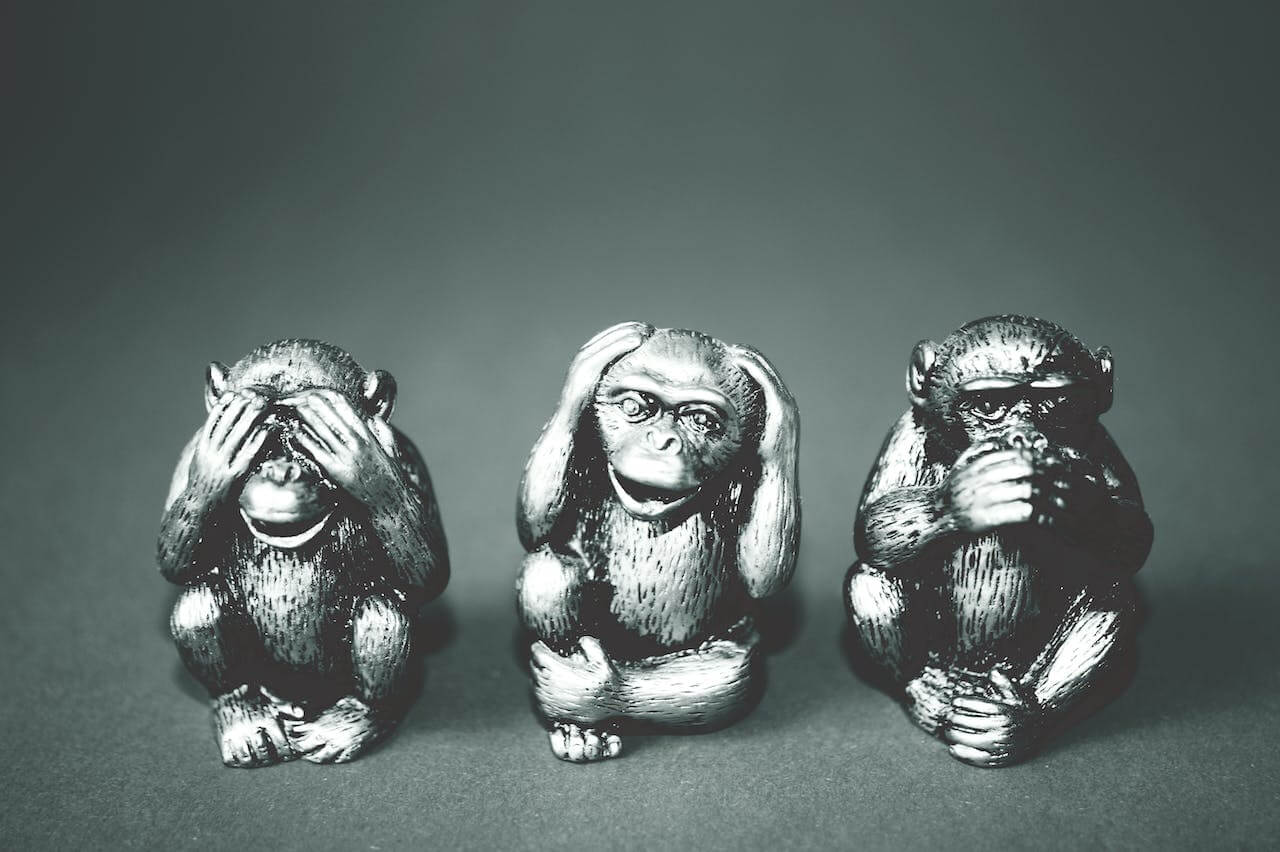Myth Busted – Gun Silencers Not Silent

True or False: Gun silencers significantly reduce the noise level of firearms.
Even when installed on firearms, silencers (also called suppressors) do nothing to reduce audible noise. The pressure wave produced by the quickly expanding propellant gasses is the main source of noise that silencers aim to reduce. The noise produced by a gunshot is due to more than just this. If the bullet can break the sound barrier—which is the case for most bullets unless they are engineered to be subsonic—then the sonic crack it produces is the main other noise component of a gunshot.
Notable but relatively inaudible gunshot noises also come from the mechanical action, the bullet’s impact with the target, and the bullet’s flight noise, the latter of which is audible only when the bullet is relatively near to the listener (the exact distance required to be audible varies with bullet caliber). For example, the firing mechanism alone can generate over 115 dB of noise, making certain firearms’ mechanical motion rather audible. One such weapon is the Sterling Submachine Gun. The decibel level of the bullet’s impact with the target can vary from hardly audible to nearly identical to that of the initial gunshot.
To What Extent Are Gun Silencers Effective?
The noise reduction capabilities of modern silencers range from 14.3 to 43 dB, depending on parameters including the bullet’s speed, the length of the barrel and silencer, and other similar considerations. Comparative studies of various commercially available suppressors have shown an average suppression level of about 30 dB, which is comparable to the reduction level achieved by the standard earplugs worn by shooters.
The decibel system is a logarithmic scale, so a reduction of 40 dB is more like 1/100th of the original sound, and 200 dB is 1000 times louder than 100 dB, not twice as loud. So, that is very substantial. The noise level is reduced to around 130–150 dB for supersonic cartridges and 117–130 dB for subsonic cartridges, however, this isn’t enough for the majority of commercially available firearms and ammunition. To give you an idea of how loud that is, a standard police or ambulance siren can reach decibel levels of 100 to 140 dB. This isn’t the whoosh sound that you hear in the movies. Despite using a silencer on a firearm, it is generally advised that the shooter continue to wear hearing protection, as hearing loss can happen at decibel levels as low as 85 dB.
A Gun Silencer’s Uses
If they can’t even get them close to being silent, then why do people even bother to use them? Silencers, it turns out, have several benefits, especially in the military, such as:
- Reductions in recoil of about 30% are common, leading to improved accuracy and lessened shooting fatigue.
- Significantly less flash, which is a boon for military personnel, especially those engaged in night operations or snipers. Removing the majority of the flash ensures that your position remains concealed when firing. If you’re shooting into an explosive gas environment, this function can be especially important, especially if you cover the silencer opening with tape before each round to keep the gasses out of the gun’s barrel.
- Not only do silencers eliminate the flash, but they also serve as an audio decoy, making them ideal for snipers. Because huge, hard surfaces reflect the crack sound of a supersonic bullet more effectively than a bang sound from an ordinary shot, snipers can successfully conceal their position by arranging themselves in such a way that the bullet would pass by them. Because the shot will appear to be coming from any direction in this well-planned setting, it will be impossible for an observer to determine its source. Wolf packs also employ a comparable strategy when modulating their howls to give the impression of a large pack encircling an object, rather than a single or double pack.
- In a city setting, where there are many background noises, suppressors alter the audible sound of a gunshot to the point where most people would not identify it as such.
- Close quarters with an unsuppressed gun can cause irreversible hearing loss from the sound reflecting at the shooter and also cause disorientation if the shooter isn’t careful. This risk is greatly diminished when using a silencer.
How Gun Silencers Work
The primary function of a gun suppressor is to reduce the rate of propellant gas emission during bullet discharge and to transform part of the kinetic energy associated with noise into heat. The second approach involves attempting to redirect or contain the sound waves via baffles or chambers that have been specifically engineered to turn them into heat. For the first, you can increase the pressure inside the chamber by simply increasing its diameter relative to the barrel’s, and then you can increase the rate of airflow through the suppressor by introducing turbulence.
The most cutting-edge noise suppressors additionally employ techniques like phase shifting and phase cancellation to reduce the audible cracking noise to an acceptable level, or they simply redirect the sound waves so they are no longer audible to humans. But so far, neither of these approaches has shown to be very effective.
Gun Silencers in Real-Life Scenarios
Contrary to Hollywood depictions where silencers render firearms nearly silent, real-life scenarios diverge significantly. Films often depict silenced firearms as whisper-quiet, creating a misleading notion about their actual noise reduction capabilities. In reality, silencers cannot eliminate the inherent noise of a gunshot but rather attenuate it to varying degrees.
Instances of public shootings highlight the limited effectiveness of silencers. Despite their use in such tragic events, the sounds of gunfire remain discernible and unmistakable, challenging the perception that silencers can mask gunfire entirely. The audibility of gunshots, even with silencers, underscores their inability to silence firearms to the point of complete stealth.
In law enforcement, situations often require rapid and precise actions, and the use of silencers might not entirely mask the noise of firearms. When officers engage in close-quarters encounters or urban settings, the sounds of suppressed gunfire are not entirely concealed, impacting operational strategies and tactical decision-making.
Testimonies from military personnel reveal that, while silencers offer tactical advantages, they do not eliminate the noise of gunfire as commonly believed. In combat zones or tactical operations, the noise reduction provided by silencers does not render firearms inaudible. Rather, they serve to mitigate certain risks associated with firearm noise without completely silencing the weapon.
Laws Around Gun Silencers In The States
In the United States, the regulation of silencers falls under the National Firearms Act (NFA) of 1934. According to the NFA, individuals must obtain approval and pay a tax to legally own a silencer. This entails applying to the Bureau of Alcohol, Tobacco, Firearms, and Explosives (ATF), along with a fee of $200. The process involves extensive background checks and paperwork, and approval times can be lengthy.
While silencers are legal to possess under federal law in the U.S., some states impose additional restrictions or outright bans. States like California, New York, Illinois, and Massachusetts have specific laws governing silencer ownership, possession, and use. These laws might include stringent licensing requirements or prohibitions on civilian ownership.
In contrast to the U.S., many countries around the world, particularly in Europe, have stricter regulations or outright bans on silencers. In some European countries, possession of silencers by civilians is illegal. The laws surrounding firearms and their accessories are often more stringent and restrictive in many parts of Europe and other regions globally.
The rationale behind regulating silencers often stems from concerns related to public safety and law enforcement. Critics argue that silencers could potentially facilitate illegal activities by reducing the audibility of gunshots, making it challenging for law enforcement to respond promptly to incidents involving firearms.
There has been ongoing debate and evolving public perception regarding the use of silencers. Advocates argue that silencers have legitimate uses in reducing hearing damage for shooters and offering tactical advantages in certain situations. However, misconceptions persist about their capabilities to silence gunfire entirely, leading to varied opinions on their regulation.
Dealing with a broad spectrum of sound waves, as opposed to pure tones, makes phase cancellation a particularly challenging task. So far, there has been no independent scientific data to support the assertion that silencers have effective phase cancellation; instead, it appears to be nothing more than a marketing ploy.







